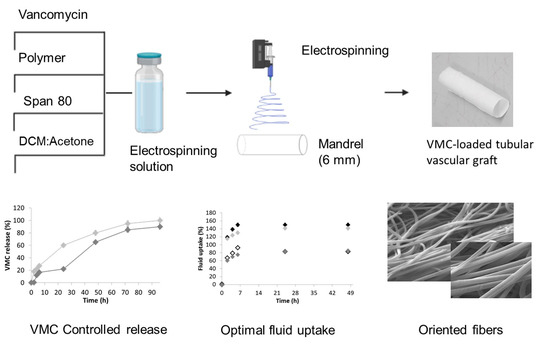Università degli Studi di Pavia - unipv.it
Tubular electrospun vancomycin-loaded vascular grafts: Formulation study and physicochemical characterization
This work aimed at formulating tubular grafts electrospun with a size < 6 mm and incorporating vancomycin as an antimicrobial agent. Compared to other papers, the present study succeeded in using medical healthcare-grade polymers and solvents permitted by ICH Topic Q3C (R4). Vancomycin (VMC) was incorporated into polyester synthetic polymers (poly-L-lactide-co-poly-ε-caprolactone and poly lactide-co-glycolide) using permitted solvents; moreover, a surfactant was added to the formulation in order to avoid the precipitation of VMC on fiber surface. A preliminary preformulation study was carried out to evaluate solubility of VMC in different aqueous and organic solvents and its stability. To reduce size of fibers and their orientation, we studied a solvent system based on methylene chloride and acetone (DCM/acetone), at different ratios (80:20, 70:30, and 60:40). Considering conductivity of solutions and their spinnability, solvent system at a 80:20 ratio was selected for the study. SEM images demonstrated that size of fibers, their distribution, and their orientation were affected by the incorporation of VMC and surfactant into polymer solution. Surfactant allowed for the reduction of precipitates of VMC on fiber surface, which are responsible of the high burst release in the first six hours; the release was mainly dependent on graft structure porosity, number of pores, and graft absorbent capability. A controlled release of VMC was achieved, covering a period from 96 to 168 h as a function of composition and structure; the concentration of VMC was significantly beyond VMC minimum inhibitory concentration (MIC, 2 ug/mL). These results indicated that the VMC tubular electrospun grafts not only controlled the local release of VMC, but also avoided onset of antibiotic resistance.

